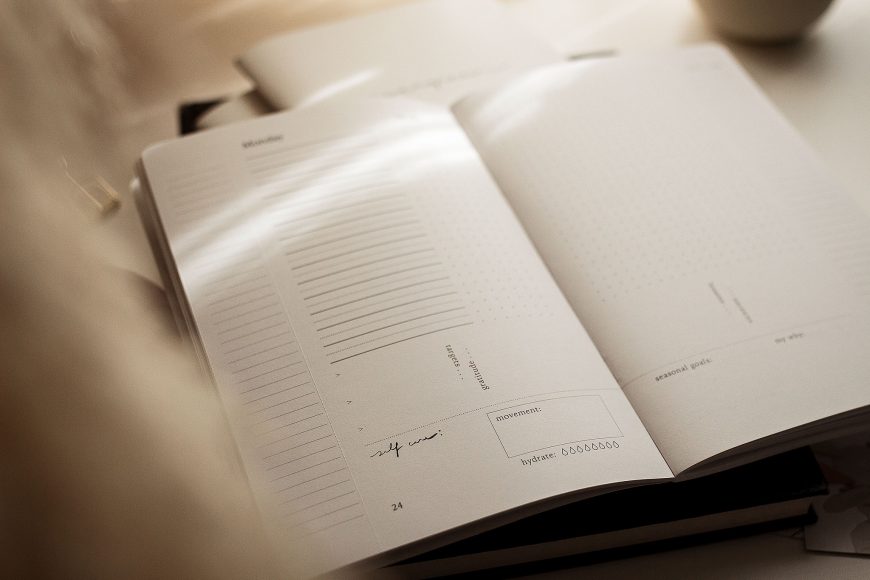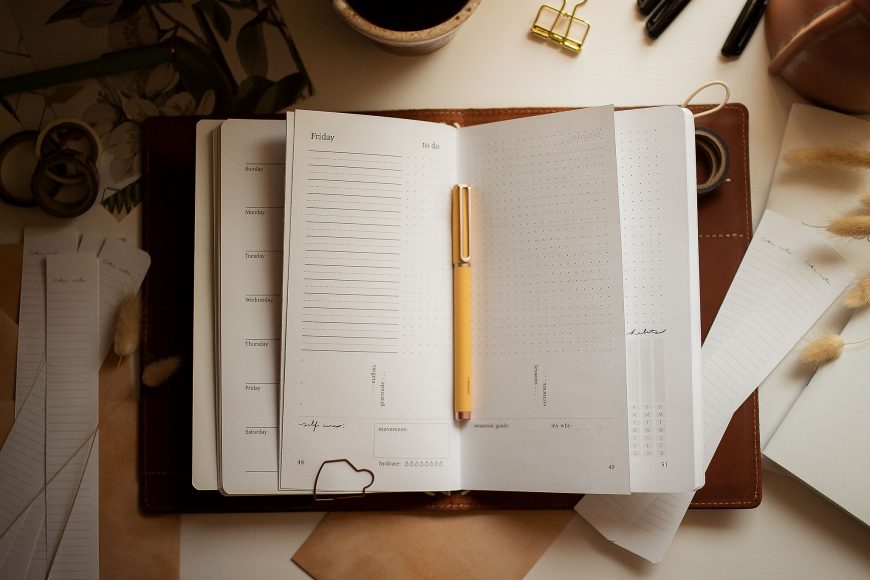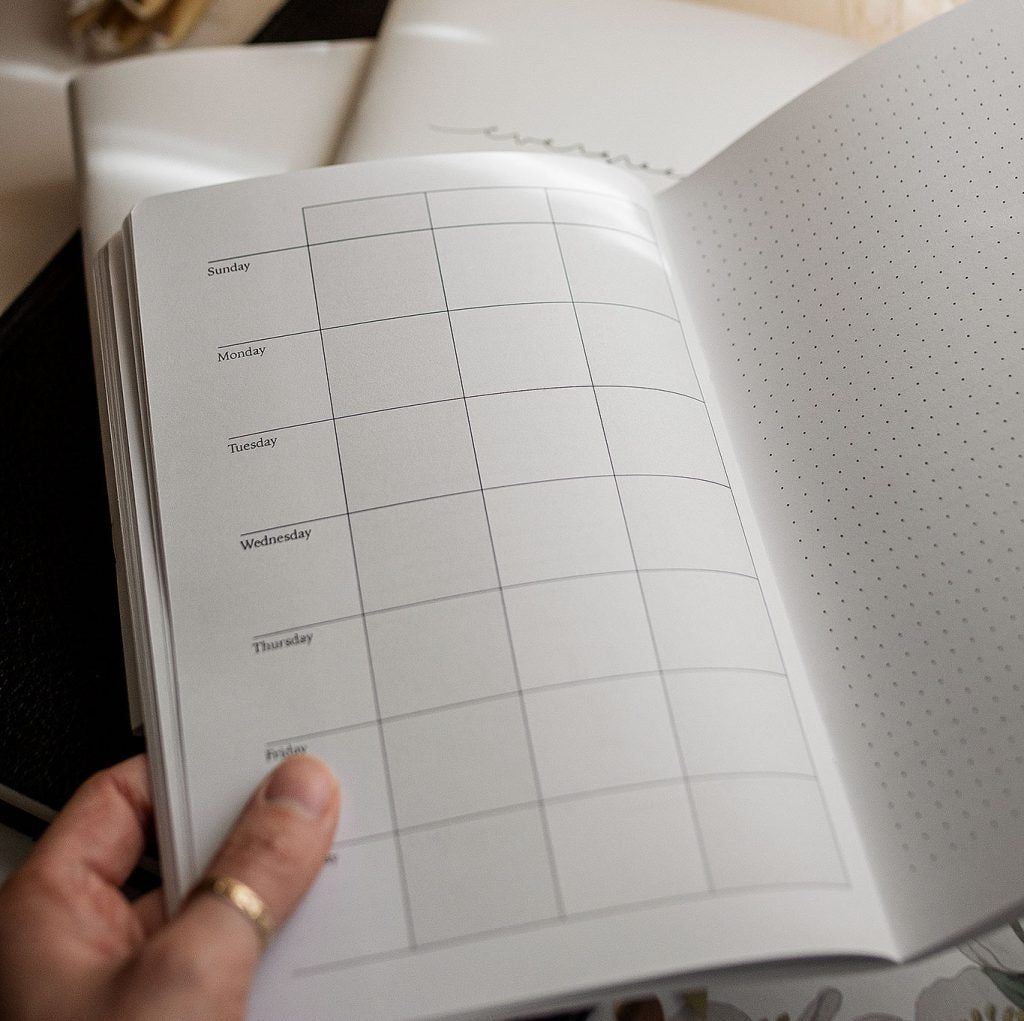You know at your core that developing strong habits can change your life. It’s a beautiful vision. But actually re-crafting your lifestyle around your most life-giving priorities takes more effort than just knowing it’s a good idea. We created our planner to deeply and consistently support you in this work.
We invested years of research into the development of a network of powerful prompts that have been proven to result in more intuitive and confident choices, a more effective approach to productivity, and a stronger growth mindset. We distilled them down to the essentials so that they could fit seamlessly into a healthy morning (or evening) rhythm. And we personally field-tested them for years. We have been reaping so many benefits from having organized minds and putting our personal growth cues on autopilot, and we are thrilled to get this game-changing system into the your hands.
Our planner has eight effective prompts, and in this post we are going to look at the first four: Targets, Gratitude, Lessons & Victories.
A quick tip before we jump in…
We truly believe that learning to leverage each one of these prompts on the day spread will significantly increase the results of your productive efforts. But it’s also critical to keep everything in the context of the season you are in. If seeing all of the prompts overwhelms you, start with 1-3, commit to practicing them regularly, and see what happens (you can even cover the others with washi tape while you get into a good mental groove with the ones you’ve chosen). We made this planner for you, so use it in the way that best fits the season you are in today.

Targets
If you could only choose 1-3 things to get done today that will move the needle forward on your most essential goals and responsibilities, what would they be? This is the question you should ask yourself when your pen hovers over the “targets” prompt. They can be as simple as “fold all the laundry” and as amazing as “go live with the new website.”
Keep in mind: this is NOT your traditional todo list (you have one of those to the right of your time-blocker). Your top “targets” section isn’t the space to write down the things you think you should do or the things you hope to get to. These are your critical goals, the ones you are committing to getting done. We all have days where we have to pivot what we planned because providence comes knocking. But beginning with realistic daily targets will make this practice wildly more effective.
Gratitude
Gratitude has become a buzz word in recent years, but it’s not without cause. Recognizing the relationships and resources God has graciously given us is a key practice in helping the mind to become considerate instead of simply reactionary. It’s a moment to pause, breathe deeply, and take in the realities of your situation. It’s an opportunity to relish the goodness of life, write words of appreciation, and to see a higher purpose in the sorrows. This isn’t forced optimism or fake positivity; this is training your brain to see God’s abundance and lean into hope.

Lessons
We all have challenging days. We all have weeks that went nothing like we thought they would. But more importantly, we all have a choice about how we’ll process those experiences. Will we sigh and vainly wish life would get easier? Or will we take the time to actually reflect on the choices we made? When we’re considering the lessons of a tough season, we should evaluate all of the things that are actually within our control. Are we by default making choices that drain ourselves of energy and sink us deeper into survival mode? Do we have sound boundaries for our schedules, our relationships, our words, our emotions? Unless we get still and seek wisdom, we’ll react our lives away. Noting lessons—big or small—empowers us to adapt our plans to our lived reality, admit where we need to grow, and make changes. This cycle of experience, reflection, learning, and growth, is what will push you to get beyond survival mode and actually accomplish those heart goals you dream about.
Victories
This is one practice we can’t help but get on a soap box about every time it’s mentioned. If you never stop to acknowledge your successes, you’re WIRING your brain to think that all of your effort is futile. We’re blowing the whistle on this in all of our lives. We’ve gotta STOP IGNORING PROGRESS.
Take the time to micro-journal even a handful of victories – big or small – you’ve accomplished lately (waking up on time, hitting 1,000 subscribers, completing that work or school project, sweet one-on-one time with a child).
It’s so easy to let progress slip away in the shuffle of daily to-do’s. But by neglecting celebration, rest, and enjoying the fruits of your labor, you’re turning away the comfort God provides through His abundant blessings. You’re acting like the fate of the world rests on the intensity of your hustle—and that is a recipe for burnout. Celebrating your victories might just be the key to revitalizing your motivational energy.
Take time to think about each of the four prompts above and consider how using them might help you reflect, adjust your habits, and work towards more intentional living. As we said at the start, we’ve seen huge benefits from using these prompts daily. When something feels off in our planning rhythm, it’s often because we’ve let the habit of using these prompts slide. If you’re in a tough season and trying to work towards better rhythms, begin by using these prompts and see where it takes you.
Using these prompts again and again and again and again each day will build initially small, but long-lasting habits around creating targets and goals, reflecting on your days, and pivoting where needed.
__________________________________________________
The Evergreen Planner system is comprised of three unique pieces: the Cover, the Annual and the Monthly. Here at Evergreen we believe in self-compassionate planning and want to inspire women to craft a lifestyle that both fuels their dreams and serves their daily rhythms. Learn more about our system here!






